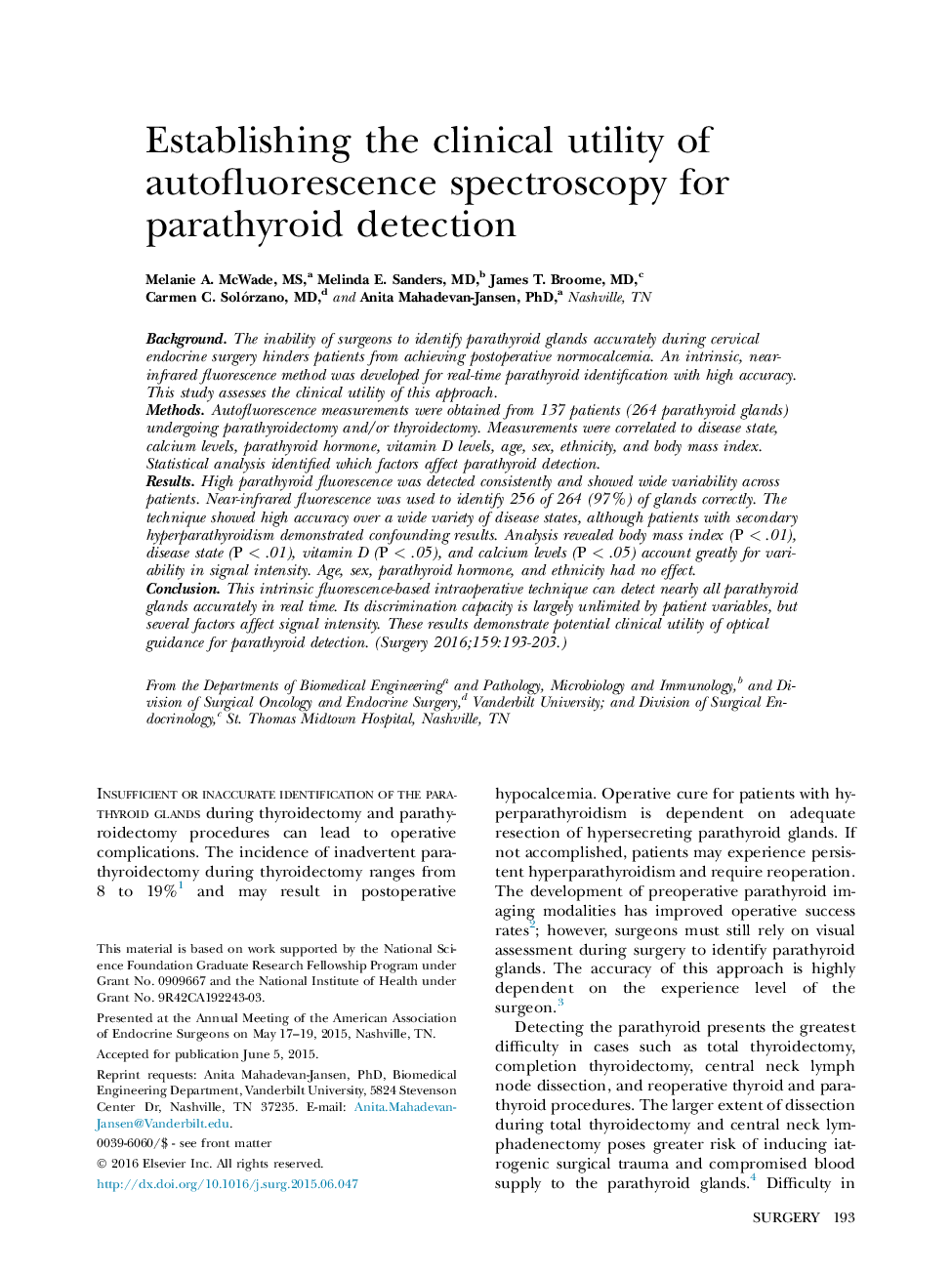| Article ID | Journal | Published Year | Pages | File Type |
|---|---|---|---|---|
| 4306642 | Surgery | 2016 | 11 Pages |
BackgroundThe inability of surgeons to identify parathyroid glands accurately during cervical endocrine surgery hinders patients from achieving postoperative normocalcemia. An intrinsic, near-infrared fluorescence method was developed for real-time parathyroid identification with high accuracy. This study assesses the clinical utility of this approach.MethodsAutofluorescence measurements were obtained from 137 patients (264 parathyroid glands) undergoing parathyroidectomy and/or thyroidectomy. Measurements were correlated to disease state, calcium levels, parathyroid hormone, vitamin D levels, age, sex, ethnicity, and body mass index. Statistical analysis identified which factors affect parathyroid detection.ResultsHigh parathyroid fluorescence was detected consistently and showed wide variability across patients. Near-infrared fluorescence was used to identify 256 of 264 (97%) of glands correctly. The technique showed high accuracy over a wide variety of disease states, although patients with secondary hyperparathyroidism demonstrated confounding results. Analysis revealed body mass index (P < .01), disease state (P < .01), vitamin D (P < .05), and calcium levels (P < .05) account greatly for variability in signal intensity. Age, sex, parathyroid hormone, and ethnicity had no effect.ConclusionThis intrinsic fluorescence-based intraoperative technique can detect nearly all parathyroid glands accurately in real time. Its discrimination capacity is largely unlimited by patient variables, but several factors affect signal intensity. These results demonstrate potential clinical utility of optical guidance for parathyroid detection.
